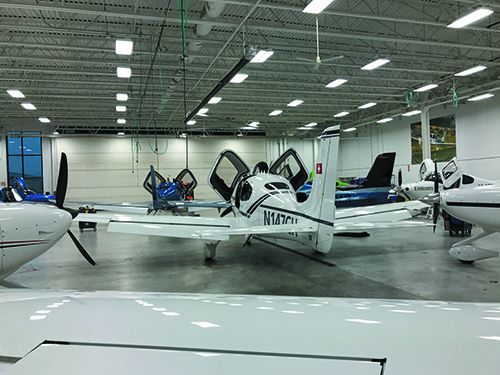MORE TECH THEORY ON USED COMPOSITES
The April 2020 issue of Aviation Consumer had an excellent article about purchasing used composite aircraft. I believe that a better understanding between composite versus metal structures may improve the understanding of what is being inspected when purchasing these aircraft.
The expert advice and recommendations from Diamond, Cirrus and Textron (Columbia/Cessna models) provide a fundamental approach for Condition Inspections regarding primary airframe and wing composite structures. Finding delaminations in composites potentially indicates: degradation of resin over time, an impact site from hangar rash, high-cycle training degradation or structural overload. The purpose of the repetitive 2000- or 3000-hour inspections is to provide for a visual identification of structural integrity. In composites the resin is potentially weakened by normal usage, exposure and cycle time, but not the structural fibers.
So, comparing composite delamination inspections or composite life limits to metal failure mechanisms such as metal fatigue is flawed. The structural, static and fatigue qualities between metal and composites are very different. For example, the noted inflight failure of a Piper or Cessna wing develops from metal structural degradation. This degradation reduced wing strength because exposure to water increases corrosion potential. Material corrosion increases local stresses, which increases the likelihood of fatigue development. (Fatigue loads may be 1/3 of static yield loads.)
As noted, extensive flight cycles increased fatigue frequency. And, metal overload causes yielding, which hardens metal and can accelerate fatigue initiation and propagation.
Historically, life limits of metal airframe structures were rarely if ever considered until the 1950s and 1960s when commercial aircraft experienced airframe pressure vessel failures. In other words, the theory that a basic airframe should last forever is not correct. Restorations of older aircraft are more described as rebuilds with newly manufactured parts. The GA metal airframe industry in the 1940s to the 1960s did not have the exposure to more recent knowledge of metal fracture characteristics and design capabilities.
When composites were introduced into GA structural components such as wings and airframe structure, the material qualities and knowledge of composites during GA aircraft certification in the 1990s were advanced by military and commercial experience. Data supporting the theory that degradation caused by UV rays, heat and loading data was available for design teams, and the FAA was able to apply levels of inspection based on testing and design margins.
This may not be a comprehensive composite versus metal comparison, but it reflects the differences in material qualities and knowledge of material properties during development. It also supports the advice to look carefully at composite structure during a prepurchase inspection.
Philip G. Potts – via email
Thanks for weighing in. Potts is a retired composite structure engineer with years of experience specializing in composite design for a popular rotorcraft OEM.
THE BEST LIGHT TWIN?
In the recent Aviation Consumer e-newsletter report on the Piper Twin Comanche there was an error in your data page that showed the gross weight of the PA-39 C/R Twin Comanche as 3725 pounds. This is for the turbo version. The normally aspirated models have a 3600-pound gross weight. I know because I own one, and in over 44 years owning 84 airplanes, the Twin Comanche has been the best value of them all. It’s an amazing little twin and highly reliable.
Randy J. Africano – Chicago, Illinois


